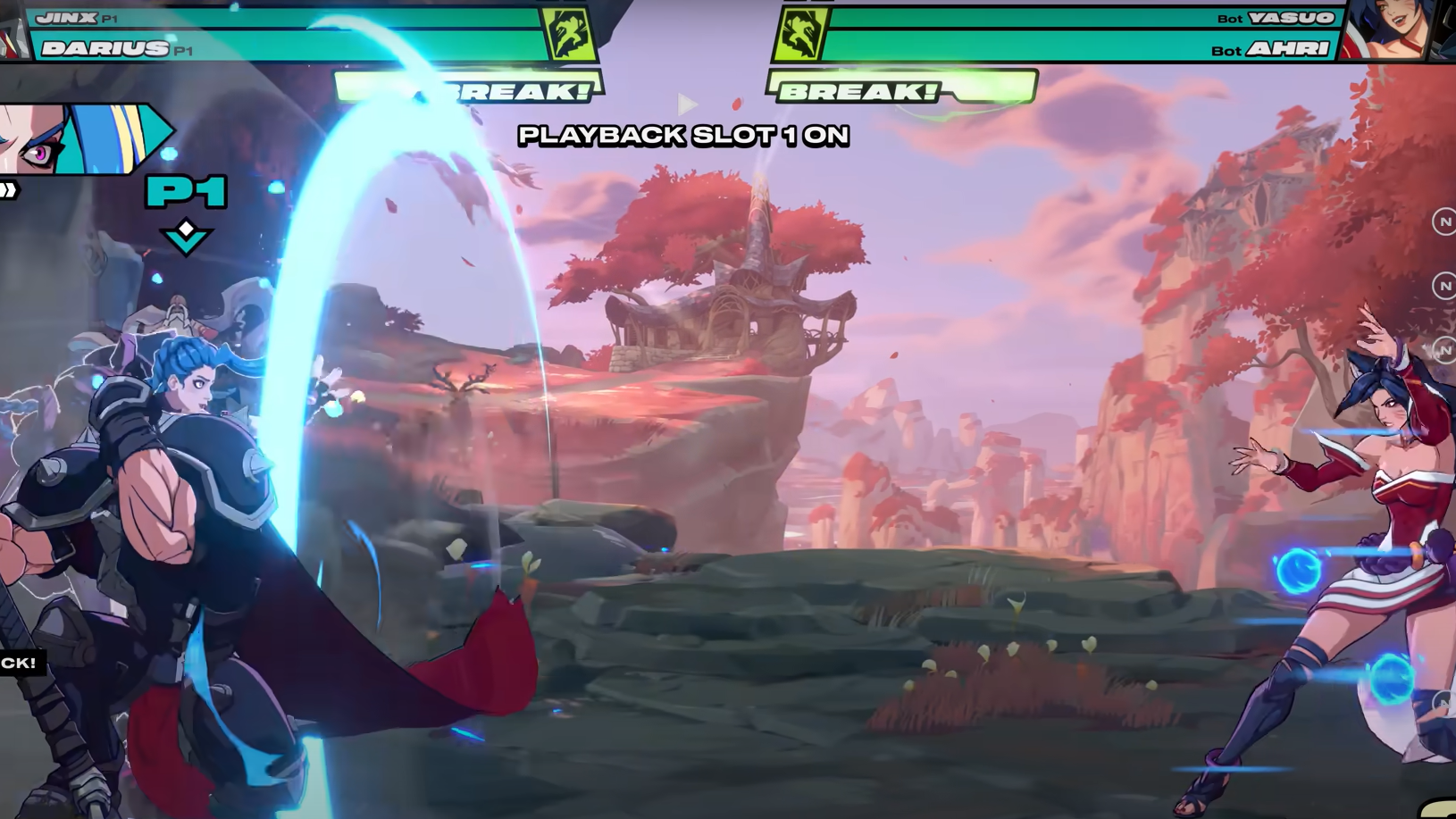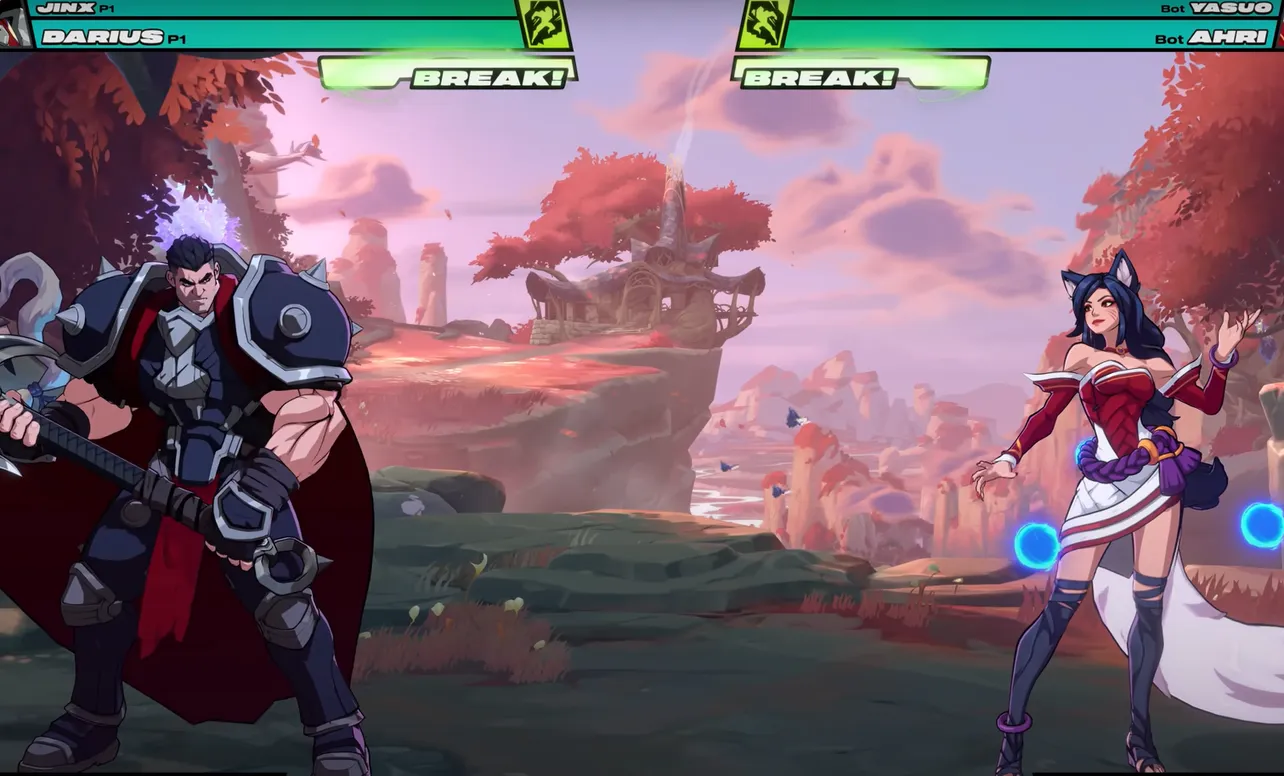Break is 2XKO’s momentum stop: a defensive option you trigger during an opponent’s offense to halt pressure and reset the situation. It sits alongside Retreating Guard, parry, and push block, and the best results come from using the right tool for the right sequence rather than treating Break as a panic button. Below is a clear look at what Break does in practice, when to spend it, and how to play around it on both sides.
What Break does in 2XKO
At a high level, Break interrupts an opponent’s ongoing offense and returns the fight to a more neutral state. It’s most valuable against long strings, assist-backed pressure, and sequences designed to carry you to the corner. Using Break buys space and denies setplay that would otherwise snowball into a knockdown or a tag-extended combo.
Two important realities shape good Break usage:
- Break is easiest to punish if your opponent expects it. If they are staggering their strings or leaving deliberate gaps, they can bait Break and counter.
- Break is less effective when the attacker has an assist on-screen. Even if you cut off the point character’s turn, an active assist can still cover them or re-engage.

Where Break fits with other defensive options
2XKO gives you multiple ways to defend, each with different risks and windows. If your first instinct is always Break, you’ll burn resources and leave obvious patterns. Learn the baseline coverage of these options and pick the one the situation calls for.
| Tool | When it works | What it beats | Key risks |
|---|---|---|---|
| Retreating Guard | While blocking; slide backward to escape strings | Mid/high pressure without low coverage | Loses to lows; you can be walked to the corner if mistimed |
| Parry | On precise timing during the hit you expect | Predictable hits and multi-hit gaps; can lead to a punish | Mistime it and you get hit; requires awareness of gaps |
| Push block | During blockstun to create space | Close-range pressure, especially vs. brawlers | Costs meter; can be baited and re-engaged if misused |
| Break | During sustained offense to hard reset the turn | Long strings, assist lockdown, corner carry | Telegraphed if overused; can be baited and punished |

Break inputs and the two‑button shortcut behavior
Break can be activated with its dedicated input or a two-button shortcut. Shortcuts in 2XKO only fire when those buttons aren’t otherwise meant to be pressed together. That design reduces accidental activations from normal inputs. One exception to keep in mind: the Team/Assist button is always live, so pairing it in a shortcut raises the chance of triggering Break unintentionally while calling assists. If you find yourself breaking by accident during assist pressure, choose a different shortcut pair in the control settings that won’t overlap with how you attack, move, or call your partner.

When to use Break (and when to hold it)
- Mid-screen vs. corner carry: If you’re about to be launched into a corner route or an assist setplay, Break early to deny the carry. If you’re already cornered but the string isn’t airtight, Retreating Guard or push block may conserve resources while still escaping.
- Assist locks vs. solo pressure: Break is strongest when the attacker relies on layered offense with an assist. If the point character is alone and predictable, parry or push block often yields a punish or a cheaper reset.
- After defensive scouting: If you’ve seen the same autocombo string or assist timing repeatedly, Break during the part your opponent refuses to vary. Predictability makes your Break safer.
- With your partner available: If your own assist is ready, consider push block to create a gap, then call your assist and take your turn. Save Break for states you cannot defuse otherwise.
Common pitfalls:
- Breaking on the first hit every time. You’ll get baited by delays and staggers.
- Breaking into an active assist. You reset the point character but still eat the assist’s follow-up.
- Breaking when you had frame advantage from a successful parry or push block. Don’t spend resources to give up a punish window.

How attackers bait and beat Break
If you’re on offense, assume your opponent has Break and structure strings that make it costly or risky to use:
- Vary your rhythm. Stagger light and medium buttons so there’s no obvious “press here” cadence.
- Layer with a safe assist. Call your partner so even if Break triggers, you’re covered and can re-initiate or punish recovery.
- End early, block, then whiff-punish. If you’ve conditioned early Breaks, stop before the usual cancel point and be ready to counter.
- Launch late in the string. Players often try to Break right before a launcher; adjust your timing to catch it.
On defense, the mirror of these ideas applies: look for rhythm changes, respect on-screen assists, and don’t telegraph your Break timing.

Practical drills to lock in timing
Use the record function in training to capture the exact pressure that’s giving you trouble, then iterate until your responses are consistent.
- Autocombo bait: Record three variants—true string, staggered delays, and assist-backed pressure. Practice rotating between Retreating Guard, push block, parry, and Break based on the variant.
- Anti-air into guess: Record jump-in heavy into ground string. Drill
Down + Heavyanti-airs on reaction. If you block instead, test whether parry or push block opens a safer escape than Break. - Corner lockdown: Record a corner sequence with assist call. Practice push block timing to create space, then add Break attempts and evaluate which point in the sequence yields the safest reset.

Quick reference: universal defensive checks
- Retreating Guard: Dash while blocking; slides you back and is generally safe against mids/highs. Watch for lows.
- Parry: Costs meter but refunds on success; target predictable hits or gaps for full punish opportunities.
- Push block: Forward plus dash during blockstun to create distance; meter-expensive, so reserve it for real traps.
- Anti-air:
Down + Heavybeats jump-ins; don’t let aerial approaches start the blender. - Launcher:
Down-Forward + Heavyis a universal starter when it’s your turn; confirm punishes into it. - Break: Use to stop sequences you can’t otherwise defuse—especially assist-layered pressure or corner carry—once, not as a habit.

You don’t need to Break every string to survive. Let Retreating Guard handle linear mids, parry the greedy gap, push block the smothering stuff, and save Break for the sequences that would cost you the round if they keep running. With a clean shortcut binding and a few training room reps, Break turns from a panic option into a deliberate momentum reset—and that’s when it wins games.


